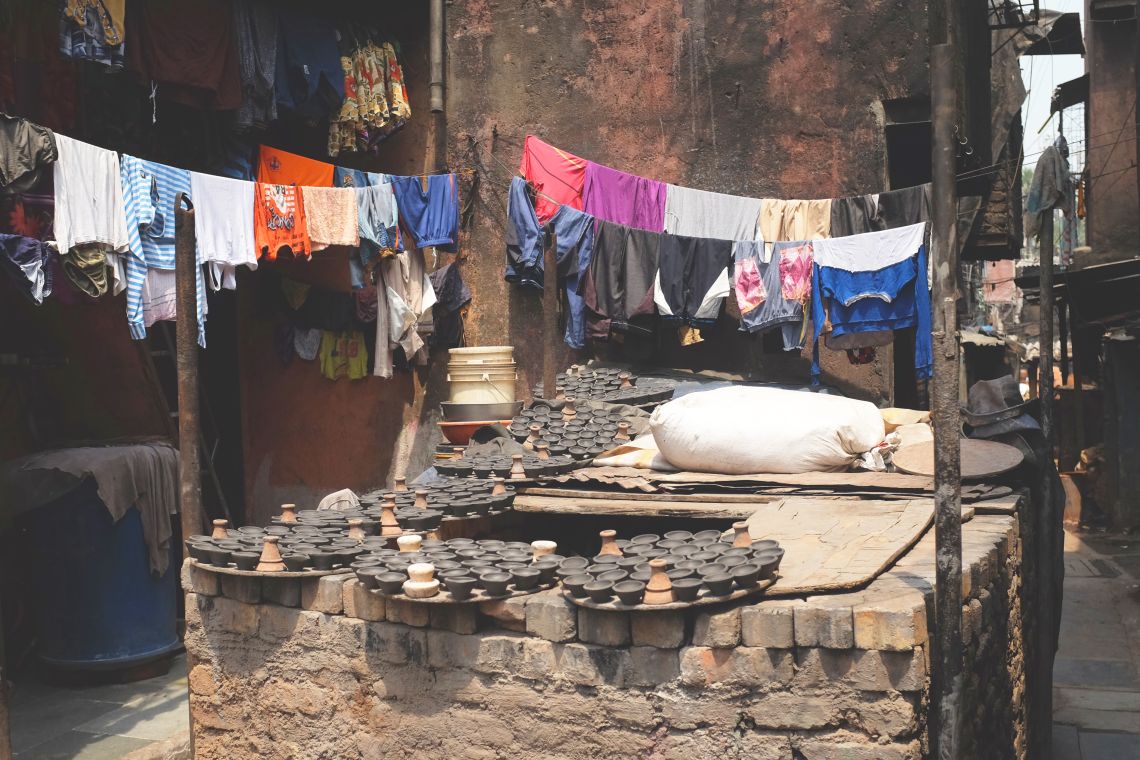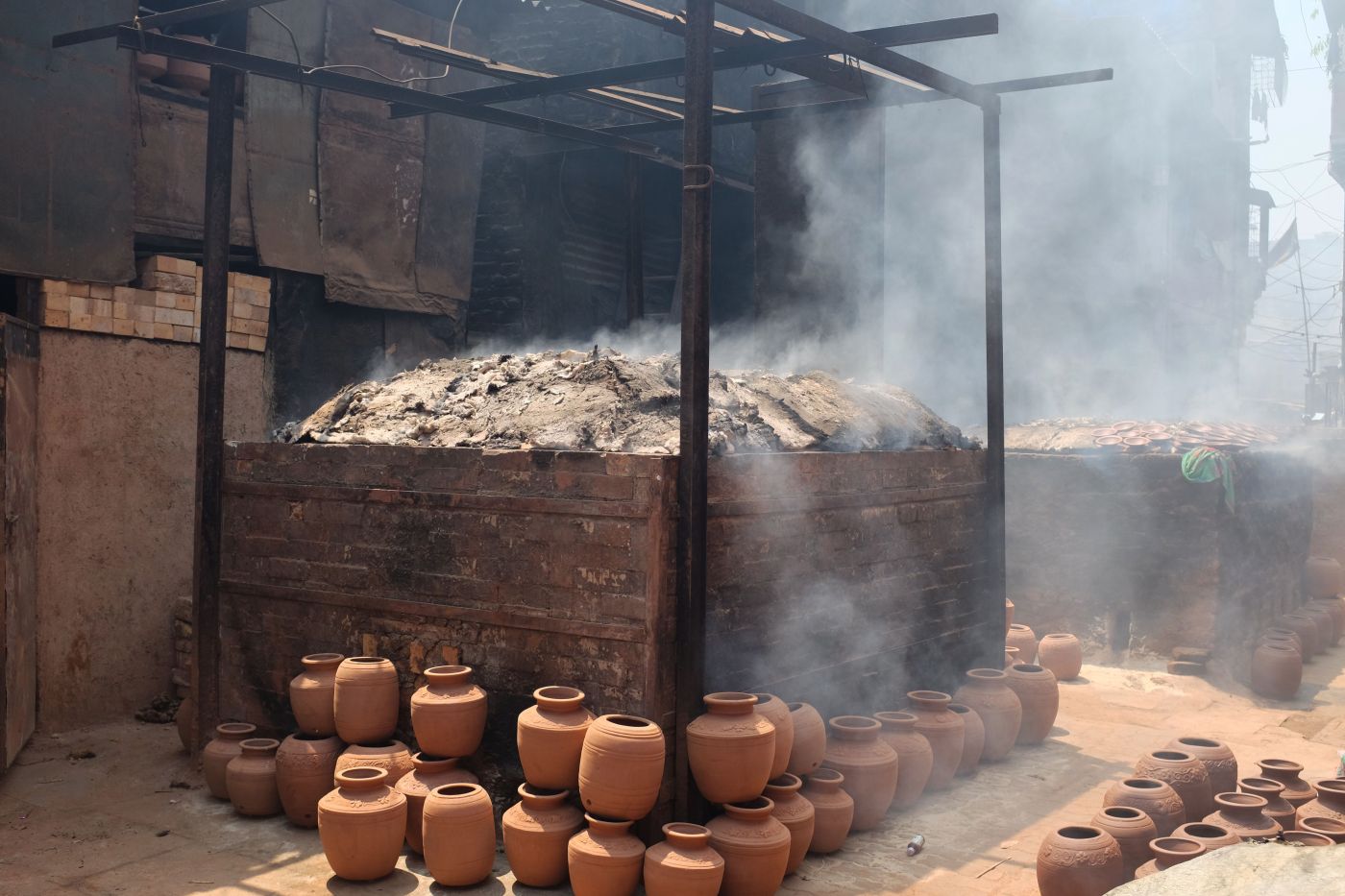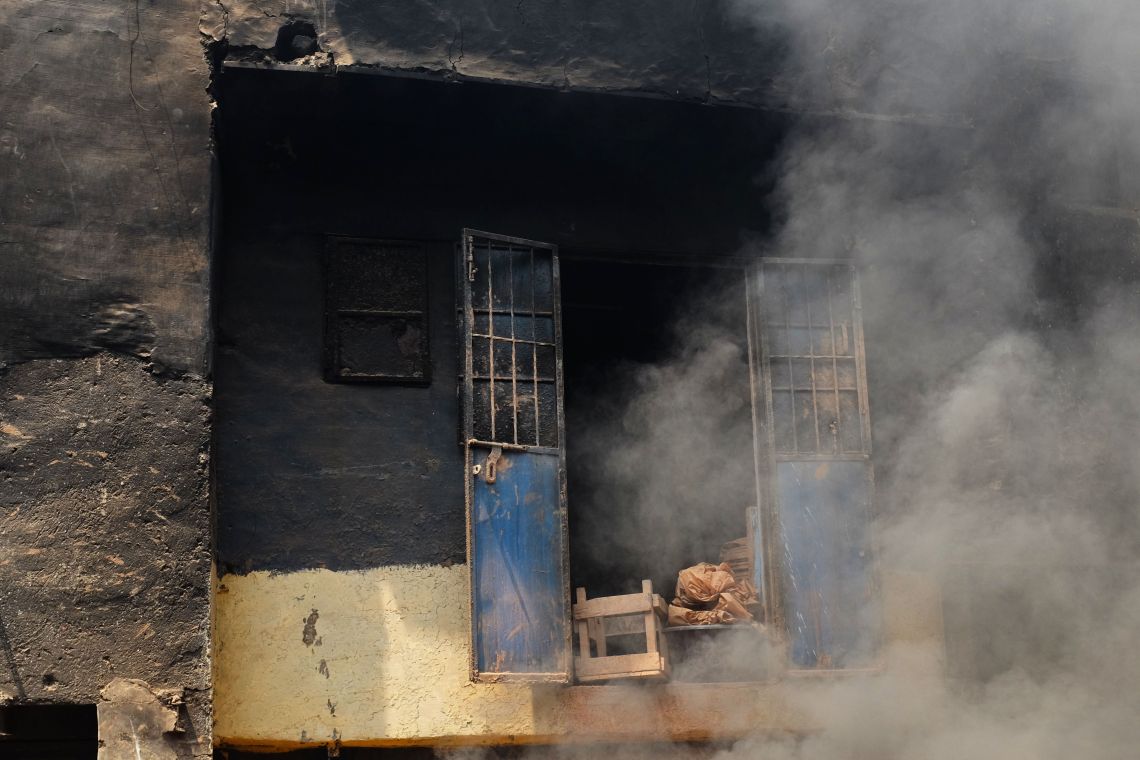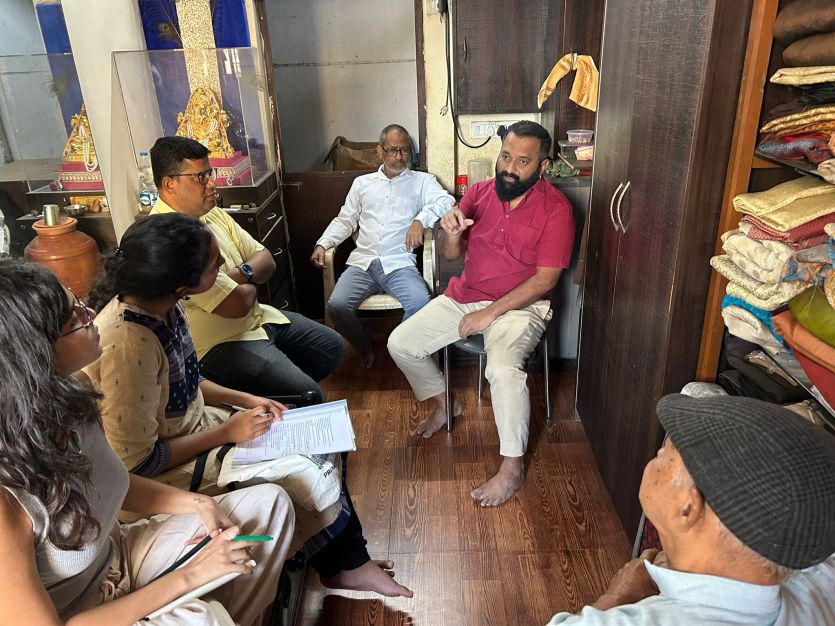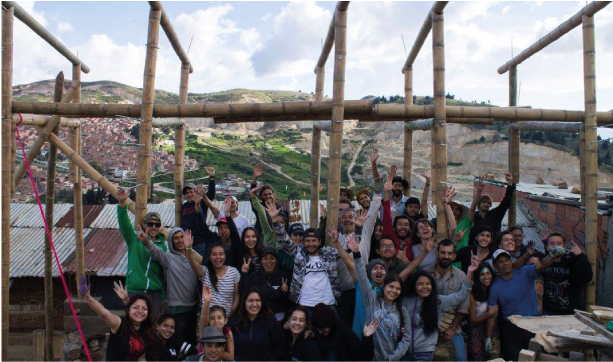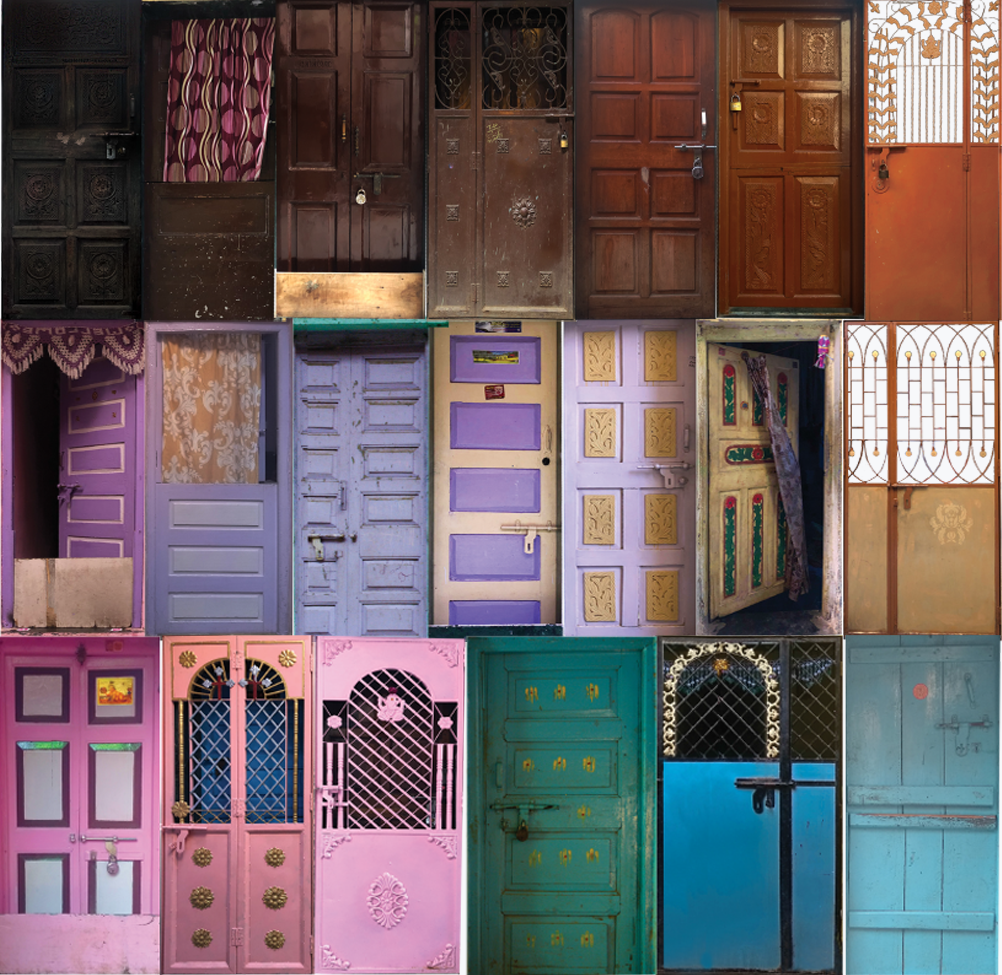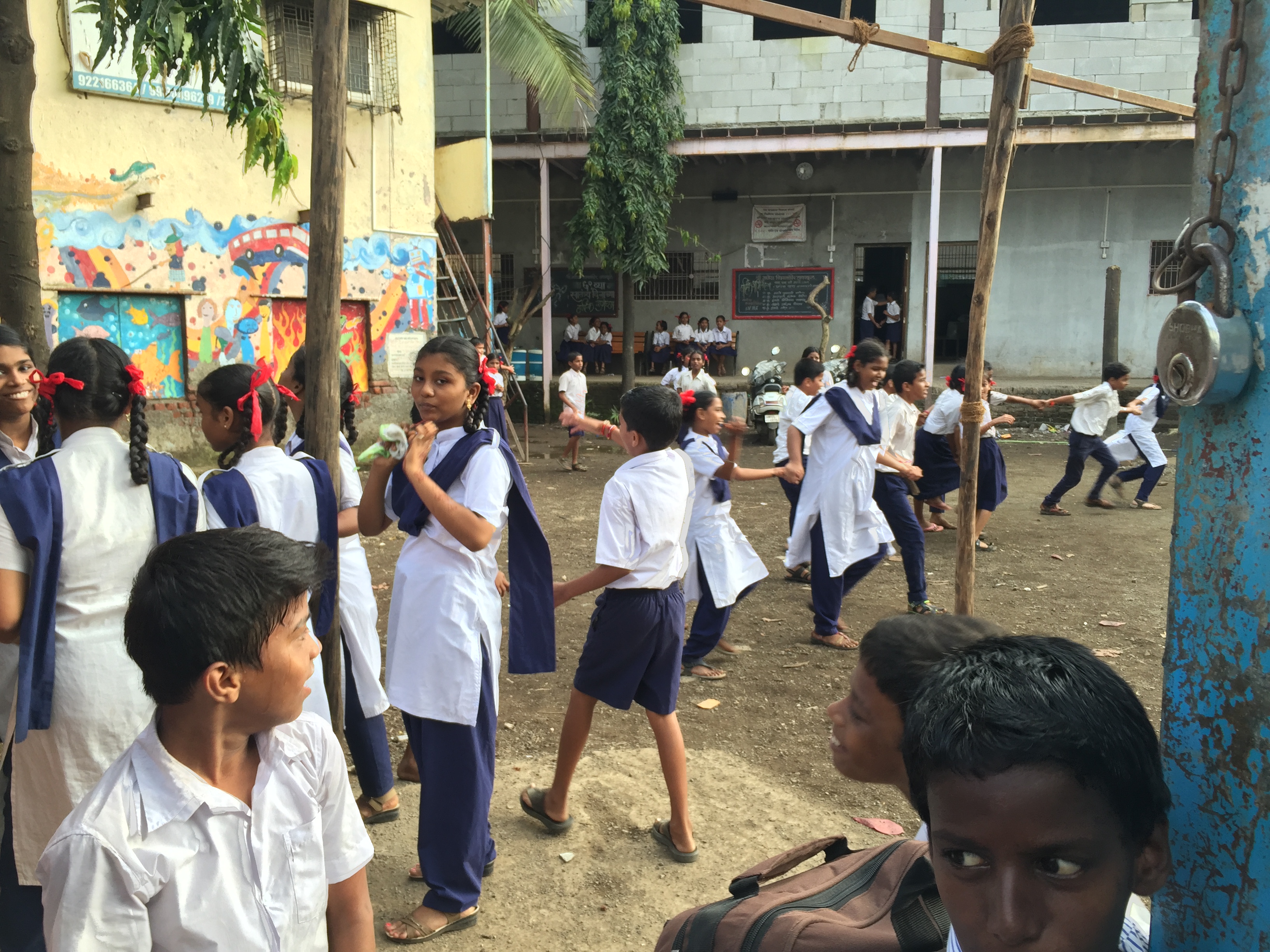Kumbharwada - a pottery village
Kumbharwada - a pottery village
Kumbharwada is one of the first settlements in Dharavi, built by migrants from Gujarat in the second half of the 19th Century. It’s home to the pottery industry, one of Dharavi's most famous local crafts. In the small gaps between their houses, artisans throw and fire pots of all shapes and sizes, from small cups for yoghurt to diya candles, larger water pots or ornamental vases. The potters brought their family trade with them, and maintain – like many in Mumbai – strong ties to their ancestral villages. They’re in constant communication (physical and online) with their families in the North, collaborating to improve kiln designs, visiting their villages regularly, and significantly, importing their clay from there.
In the 1800s, Mumbai’s municipal authorities moved the potters, who had previously settled in the Southern tip of the city, to what was then its Northern fringe. In the wealthier parts of town, the smoke from their kilns was deemed a nuisance. When they arrived, Dharavi was a no-man’s land between two railway lines, dotted with a few villages, which have since expanded into one large settlement. As Bombay grew, Dharavi ended up in a more central location, prompting property speculation and a cultural, touristic and academic interest in the neighbourhood.
Industry and daily life rub up against each other in Kumbharwada.
Kumbharwada is made up of five lanes, dotted with over 120 kilns, with houses and workshops crowded around them. Most buildings here fit a typology that urbz has previously identified – the tool-house – with workshops on the ground floor with residential space above. As is the case throughout Dharavi, this multiple use of space is both a blessing and a curse. On the one hand, social circles are very localised and hybridised, with friends, colleagues, extended families, employees and business rivals all close by. For example, childcare can be shared between extended family members, or else parents are able to work and keep an eye on their children at the same time. Otherwise, if a potter requires help to fire their kiln, they can call upon a relative to help out. If they’re not able to fulfil an order, they can pass it onto a cousin. Around here, everyone is an ‘auntie’ or an ‘uncle’.
On the other hand, residents have to tolerate the noxious smoke spat out by the small brick kilns that they’ve built near their homes. To fire pots, fabric scraps from the nearby textile industry are stuffed into a fire-pit at the base of the kiln and lit. This produces an acrid smoke which chokes the lanes and covers the houses in black soot. Unfortunately, this space is also the primary public, social and open area for this community. Although each kiln isn’t used daily, there is always one being fired up nearby, and it’s pretty clear that this practice is unhealthy and unpleasant for Kumbharwada’s residents.
urbz recently hosted a group of students from NYU Abu Dhabi, some of whom looked at Kumbharwada and studied the pollution problem. As engineering students, the aim was to use some of their know-how to propose potential ways of reducing smoke emissions.
In part 2, we'll discuss Kumbharwada's kilns and their output in more detail, but first it's important to talk about how to approach the pollution issues. Many would be inclined to knock down the kilns and to rebuild them in a separate, zoned, industrial area. Top-down reconstruction projects are often problematic in self-made neighbourhoods like Dharavi. They can result in the destruction of customs, lifestyles and architectural typologies that are an important part of residents’ lives. Redevelopment schemes often focus on a Eurocentric ideal, which sits far from the reality of life in these settlements. The work of the town planner Patrick Geddes can point us in the right direction here.
Map of Kumbharwada. At the top of the image is 90 Feet Road, an important commercial street for the area, and where many potters have small shops.
Geddes pioneered a technique called Conservative Surgery, which involved minimal intervention, giving agency to residents. His early training in biology informed his understanding of cities as organisms. He saw them as composed of complex, interdependent networks that require nurture. Evolutionary theory was also a touch point – Geddes thought that conservation shouldn’t involve freezing a neighbourhood in a particular moment in time, but rather preserving its spirit and function as part of a wider whole, allowing it to evolve as it always had done.
How did it come about? Conservative Surgery was first developed in the late 1800s in the Old Town of Edinburgh. The area had become neglected after a modern, grid-iron borough was built to the north. The city’s wealthy residents had set up camp in the New Town, and issues of overcrowding and sanitation plagued its older sibling. Many wanted to see it knocked down entirely. Instead, Geddes, a well-off academic, moved into the slum and worked with its inhabitants, tending to its buildings, weeding out only the most derelict ones. They were replaced with much-needed public and green space. He helped form residents’ networks and organisations, so that future change could be self-initiated and self-managed. This sat in contrast with other large infrastructure projects that were happening around the city, and which had threatened to flatten the Old Town too. Crucially, his biological training allowed Geddes to understand that architectural heritage wasn’t the only thing at stake. What Walter Benjamin referred to as ‘porosity’ – a capacity to absorb (and perhaps encourage) change through a flexible, dynamic and informal use of space – was set to disappear.
Glasgow, much like Edinburgh, encountered issues with cramped housing in poor condition. From the 1950s onwards, the opposite of Conservative Surgery took place, as people were shifted out of their tenement flats to new towns outside of the city, or to high-rises at its fringes. These areas became infamous as sites of neglect, rife with antisocial behaviour. Perhaps some of the blame can be attributed to a geographical and infrastructural distance from the city, which cut people off from their communities, from leisure, and from employment opportunities. It seems that wholesale redevelopment so often prices people out of their own neighbourhoods, shifting problems elsewhere, out of sight of the rich. In fact, this is how Dharavi came to be in the first place.
One of Kumbharwada's kilns being fired. This kiln belongs to Umesh, who we'll talk about in part II.
Patrick Geddes’ work in Edinburgh eventually led him to India, where he helped planners across the country to implement Conservative Surgery. He stressed the importance of preserving existing densities, networks of alleyways, and clusters of houses. He saw the value of their complexity, and also argued that it was much cheaper to make small improvements rather than knock the whole lot down – which was pitched as an alternative. For Geddes, many Indian settlements could be compared to Edinburgh’s Old Town, with its hybrid residential, commercial and light-industrial spaces connected by narrow alleyways.
Dharavi sits on a slice of land that’s considered very valuable to real-estate moguls, and its redevelopment is at the tip of many tongues. Suggested plans for Dharavi are an orgy of Public-Private Partnerships, Transferable Development Rights and high-rise 'solutions’. The Development Plan envisages chopping up Kumbharwada with wide avenues (a dated, car-centric approach). This was the same issue faced by Geddes when he came to India in the early 1900s. He instead ensured that existing typologies, densities and streets were kept, with small openings created where possible. Rather than thinking about wholesale redevelopment as a solution to the problem of pollution found in Kumbharwada, and in Dharavi as a whole, let’s take heed of Geddes’ wisdom and rule it out from the start. Instead, we should think of answers that can be implemented at a small-scale, in collaboration with the local community.
Recommended reading / references:
A soul-searching business The slum-dwellers of Dharavi are green. (2007). The Economist, [online] (8560). Available at: https://www.economist.com/node/10311257 [Accessed 20 Apr. 2018].
Baweja, V. (2015). Architecture and Urbanism in "Slumdog Millionaire": from Bombay to Mumbai. Traditional Dwellings and Settlements Review, 26(2), pp.7-24.
Dovey, K. (2013). Informalising Architecture: The Challenge of Informal Settlements. Architectural Design, 83(6), pp.82-89.
Dovey, K. and Tomlinson, R. (2012). Dharavi. [Melbourne]: Melbourne School of Design.
Engqvist, J. and Lantz, M. (2009). Dharavi - Documenting Informalities. New Delhi: Academic Foundation.
Financial Express (India) (2010). Made in Dharavi.
Geddes, P. and Lanchester, H. (1917). Town Planning in Jubbulpore. A report to the Municipal Committee by Professor Geddes and H. V. Lanchester, F.R.I.B.A., 1917.
Geddes, P. and Tyrwhitt, J. (1947). Patrick Geddes in India.
Goldsmith, S. and Elizabeth, L. (2010). What we see. Oakland, CA: New Village Press.
Habraken, N. and VALKENBURG, B. (1972). [De dragers en de mensen.] Supports: an alternative to mass housing, Translated by B. Valkenburg. London: Architectural Press.
Haworth, R. (2000). Patrick Geddes' concept of conservative surgery. Architectural Heritage, 11(1), pp.37-42.
Jeffries, S. (2015). In praise of dirty, sexy cities: the urban world according to Walter Benjamin. The Guardian. [online] Available at: https://www.theguardian.com/cities/2015/sep/21/walter-benjamin-marseille-moscow-cities [Accessed 20 Apr. 2018].
Nisbett, M. (2017). Empowering the empowered? Slum tourism and the depoliticization of poverty. Geoforum, 85, pp.37-45.
Srivastava, R. and Echanove, M. (2014). The Slum Outside: Elusive Dharavi. Moscow: Strelka Press.
Vision Mumbai - Transforming Mumbai into a world-class city - A summary of recommendations. (2003). [online] McKinsey. Available at: http://mumbaifirst.org/wp-content/uploads/2016/07/McKinseyReport.pdf [Accessed 20 Apr. 2018].
The sooty front of a typical building in Kumbharwada.
